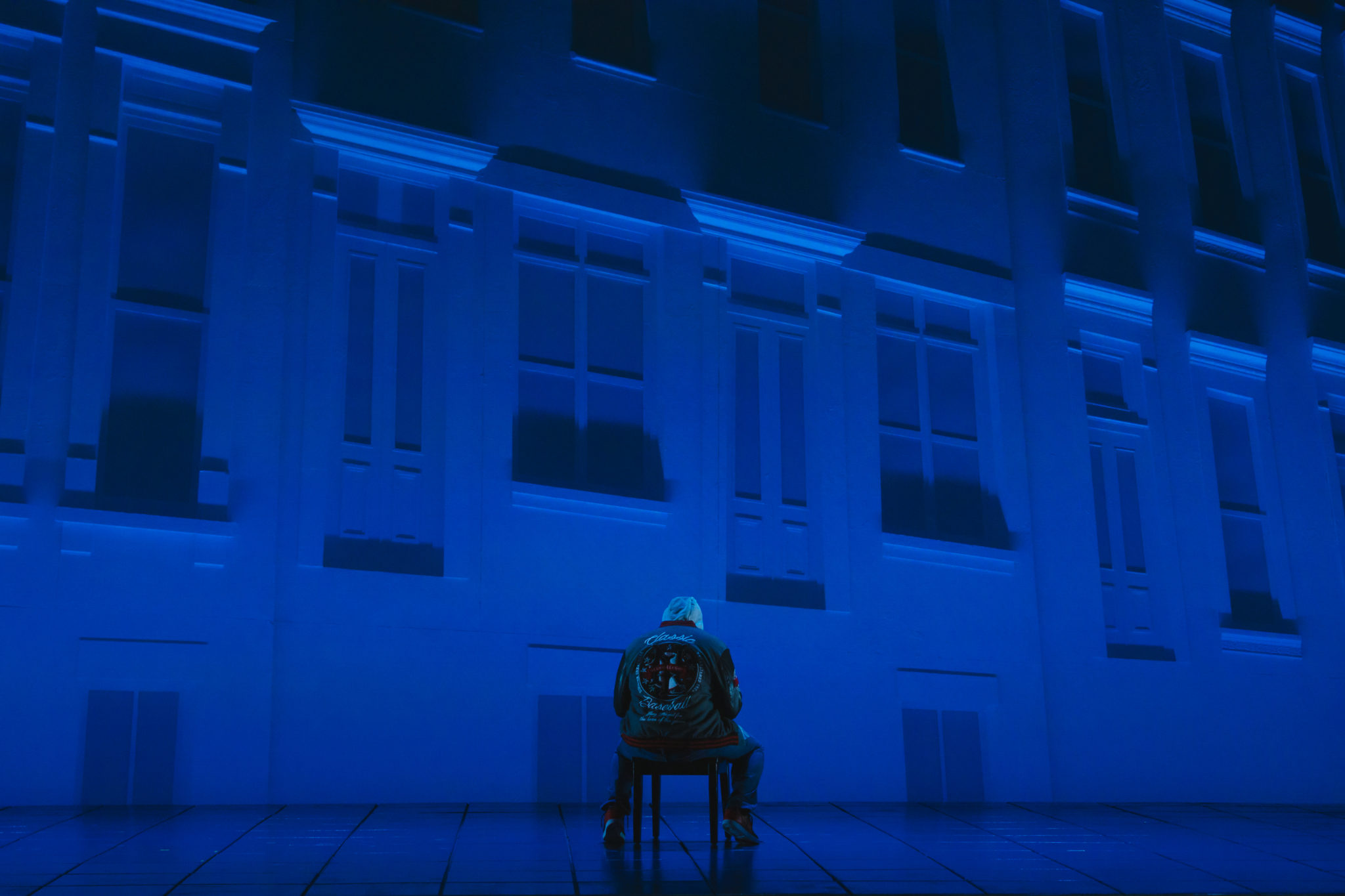
I have a confession to make. I was a little bit afraid to watch “Blue” at Seattle Opera. Often described as “the race opera,” “Blue” tells the story of a Harlem family losing their son to police violence. It sounded pretty heavy during a time when the more escapist aspect of opera has a lot of appeal. But I know that the ability to tune out racial violence is a privilege, so I went anyway. And there was nothing to be afraid of.
“Blue” is Funny
Yes, “Blue” is an “issue” opera. The issue is dead serious, and the opera approaches it with sufficient respect for its weight. But that doesn’t mean every instant is somber. In fact, the first act is frequently funny. This is definitely the first time I’ve heard the word “diarrhea” in an opera (it occurs in the same song where the police buddies warn the new father that he will never sleep again). From the chorus of girlfriends suddenly falling silent when they see a photo of the mother’s new husband to the shrill nurse teaching the new father how to hold a baby and the father spouting parental cliches at his teenage son, there is a lot to laugh about.
“Blue” is Good
Librettist Tazewell Thompson is a new name to me, but he’s on my radar now. The writing for “Blue” is incredible. Art explores issues through individual stories, and the individuals in this story are all fully fleshed out, believable characters that you can relate to, even as they sing the distilled and stylized lyrics of opera. Unlike most other operas in English, “Blue” perfectly balances the fine line between the elevated enunciation of aria and more naturally delivered lines of casual dialogue. The music helps with that, subtly shifting tone to match the words. Both lyrics and music are highly referential without ever being derivative. Various scenes are jazz-inflected; there are hints of soul and gospel and even once, an oblique reference to Bob Dylan (“How many shoes does a man have to shine?) and maybe even Pink Floyd. I’m pretty sure I missed more than I caught. The references are never gratuitous though, and it all hangs together perfectly.

In many ways, the production felt like a straight play, with nothing on stage but a few pieces of furniture that performers carried on and off with them. The set itself was a plain white backdrop of the outside of an apartment building. It never moved, but it felt dynamic because of the way “sunlight” moved across the building and lights went on and off in the windows for each scene. I’ve never noticed the lighting design so much in a performance, and it’s amazing how effective such a simple concept was.
“Blue” is a really good opera.

Photo credit: Philip Newton. c/o Seattle Opera
“Blue” Packs a Punch
“Blue” holds its own as an artwork. But it does justice to its topic as well. The first act builds the characters and their relationships and their context. We see the mother’s bond of friendship with her girls, and the way they hesitate to celebrate her marriage and pregnancy because they know the challenges she will face as the mother of a Black boy. They come around to her husband, even though they’d rather he worked for UPS. To them he’s not one of The Good Guys, but he’s a good guy. We share their wonder in the birth of their baby, and their frustration at his angry adolescence – jumping turnstiles as a protest of capitalist inequality is a misguided bit activism even his father mistakes for the slippery slope to thuggery. Even when the gloves come off, when the father exhibits bad parenting and the son lashes out in cruelty, we believe in them as a family.
The son is killed during a protest that takes place during intermission. The audience only sees the family before tragedy in the first act and the family after tragedy in the second act. We see the father react to pain with anger as he argues with the reverend and the mother’s numb despair as her friends have to help her dress for the funeral. Through community and faith, we see at the funeral that these bereft parents will survive. A sort of post-script provides an alternate ending, a should-have-been, of the intact family sitting down to dinner together. Father and son bickering mildly, mom serving special dishes for the vegan son, as they discuss his plans for college.
As a godless heathen this scene presenting the option of a better reality was a better balm than the faith that soothed the characters. But I still broke down when the mother sang instructions to God for taking care of her son using the same words as the nurse who taught her husband how to hold a baby. It was gutting, but in an opera way; the way that you cry for Tosca’s pain rather than in despair at the corruption of counts, the way that leaves you feeling like you’ve witnessed something beautiful, even as you wipe your tears.
I don’t know if an opera can make you take political action to hold officers of the law accountable for killing the people they’ve sworn to protect. But I do know that no matter what color your skin, you will go straight home from “Blue” and hug your kids.

Cast
Kenneth Kellogg (The Father)
Briana Hunter (The Mother)
Joshua Stewart (The Son)
Gordon Hawkins (The Reverend)
Ariana Wehr (Girlfriend 1/Nurse/Congregant 1)
Ellaina Lewis (Girlfriend 2/Congregant 2)
Cheryse McLeod Lewis (Girlfriend 3/Congregant 3)
Camron Gray (Police Buddy 1/Congregant 1)
Korland Simmons (Police Buddy 2/Congregant 2)
Joshua Conyers (Police Buddy 3)
The Details
Performed in English with subtitles.
Music: Jeanine Tesori
Libretto: Tazewell Thompson
Premiere: 2019
Seattle Opera Premiere: February 26, 2022
Performance Time: 2 hours 30 minutes




About the author